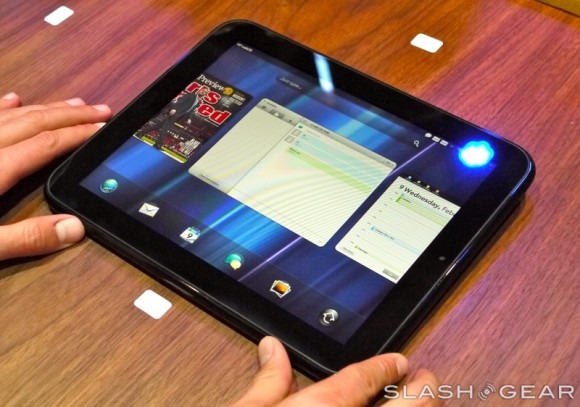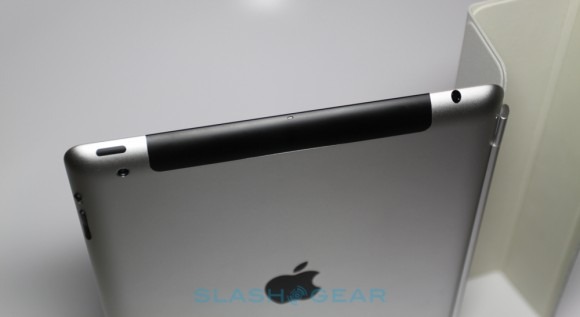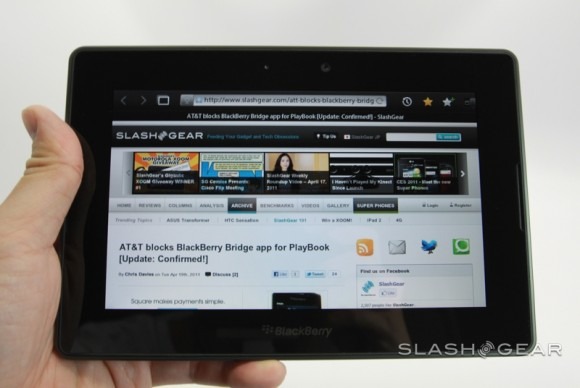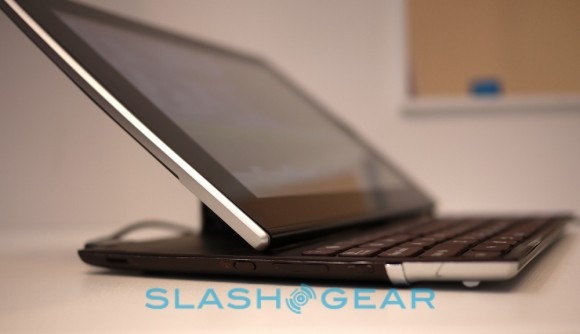So You Want A Tablet?
Scan the headlines, and you'd be forgiven for thinking that everybody had a tablet these days. The iPad broke the market open, and since that point we've seen a torrent of rivals each trying to take the touchscreen crown. It's a tricky segment to judge, and even harder if you're trying to take your first steps into tableteering. Get up to speed with your options – and advice on which slate to select – after the cut!
iOS vs Android (or something else?)
The big battle right now is between iOS, on Apple's iPad, and Android Honeycomb, on various tablets from Samsung, Motorola, ASUS and others. Apple's iPad 2 follows the original iPad in leading the consumer tablet market, with a clear and user-friendly UI, competitive prices and that all-important fashion factor. There's a huge number of iPad-specific apps – Apple suggested over 90,000 at WWDC 2011 – and with dominant market share that figure is only increasing.
Android Honeycomb is neither as instantly-accessible nor as widespread or mature as iOS but, as with Android phones, the range of manufacturers adopting the platform means it's accelerating fast. Tablet-specific apps are less prevalent in the Android Market, though that's something else we'd expect to change sooner rather than later.
[aquote]You can quite happily be an iPhone user and a Honeycomb tableteer[/aquote]
Your decision may well be pushed by what software is running on your phone: if you're already an iPhone user, then iOS on the iPad 2 will feel more familiar than Honeycomb, and vice versa, and you can also reuse apps you've already bought. Still, there's not actually a huge amount of integration between the two platforms' phone and tablet versions. You can quite happily be an iPhone user and a Honeycomb tableteer, in fact, and the most the two will ever need to play together is if you use WiFi hotspot sharing on your phone.
Some of the tablet outliers will be better integrated. HP's TouchPad, which will go on sale on July 1, will offer clever tap-sharing functionality with webOS smartphones like the Pre3 and Veer. Decide you want a bit more space for the webpage you're browsing on your Pre3, and by tapping the phone on the TouchPad it automatically opens up in the webOS slate's browser. Similarly, contacts and other information can be swapped around.

The most extreme integration comes with the BlackBerry PlayBook. It runs QNX while RIM's latest smartphones run BlackBerry 6, but certain core apps on the PlayBook – like email and calendar – don't just take advantage of but depend entirely on their counterparts on a BlackBerry phone. An update later in the year will enable native apps, but until then there's a significant penalty if you're not a BlackBerry phone user but you buy a PlayBook.
Then there's Windows 7. Microsoft's OS may be the big player on the desktop, but when it comes to tablets it's had trouble expanding beyond vertical markets and niche segments. Artists and doctors appreciate the precision and flexibility of an accurate digital stylus, but consumers seem to prefer to use their hands. Unfortunately, Windows 7's UI falls well short of finger-friendliness, and a reliance on x86 hardware means that while Windows slates may well be fast, they also drain their batteries quickly too.
So which should I buy?
If you're already heavily invested in an existing ecosystem – whether you have an iPhone full of iOS apps or a DROID packed with Android software – then it makes sense to pick up a tablet running the same platform. That way you can generally keep using what you've already paid for. Even if you've stuck with free apps only, there are still cases where an iOS title isn't available on Android or vice-versa, so you may have to spend some time researching alternatives.

For beginners and those who want their tablet to "just work" there's a lot to be said for the iPad 2. It's easy to use, offers lashings of third-party software and the stability Apple has become renowned for. Most of our lingering complaints – the absence of wireless synchronization, the janky notifications and other frustrations – will generally be addressed in iOS 5, which will be released this fall.
Android is less mature, though there are still benefits for opting for Google's platform over iOS. One is the range of hardware on offer: Motorola's XOOM will soon come with 4G connectivity on Verizon's LTE network in the US; Samsung's Galaxy Tab 10.1 beats the iPad 2 when it comes to being thin and light; and ASUS' Eee Pad Transformer can be paired with a clever battery-packing QWERTY keyboard for easier text-input and longer runtimes.
[aquote]If you're looking for unusual features then Android is the platform most likely to deliver[/aquote]
Alternatively there's T-Mobile's G-Slate (aka the LG Optimus Pad) which can shoot 3D high-def video, or the HTC Flyer which – although not yet running Honeycomb – has a clever digital pen for note-taking and sketching. If you're looking for unusual features then Android looks to be the platform most likely to deliver, as OEMs jostle to find a unique sales angle. The SlashGear favorites are probably the Galaxy Tab 10.1 for general users and the Eee Pad Transformer for those wanting to create and edit documents while on the move.

RIM's BlackBerry PlayBook is interesting, but falls short of mainstream appeal. If you're an existing BlackBerry user and your corporate IT department is wary about data security then the PlayBook's reliance on your locked-down RIM phone could prove appealing, and the compact, dual-core 7-inch slate is certainly not short on power. Nonetheless, we'd be reluctant to pick one up until the Canadian company polishes the software experience.
The HP TouchPad could be the wildcard. We've long held that webOS is ideally suited – perhaps more than any recent mobile platform – to larger-screen devices like tablets, and what we've seen of the 9.7-inch TouchPad so far looks to bear that out. On the downside, there's even less third-party software out there for the slate, and its clever tap technology depends on users also picking up a new webOS smartphone. We'll have to wait until review units are available to know whether the TouchPad really is a legitimate iPad/Honeycomb rival.
What's further down the pipeline?
The most movement will be around Android, especially as Google prepares to launch Android Ice Cream Sandwich in Q4 2011. That will bring together the different elements of Honeycomb as well as Android for smartphones and for Google TV into a single package. Innovative form-factors like the ASUS PadFone – which consists of an Android smartphone that docks into a larger tablet housing – are also expected later this year.
Before then, though, we'll see a broader range of screen sizes, including the 8.9-inch version of the Samsung Galaxy Tab, the 7-inch ViewSonic ViewPad 7x and Acer Iconia Tab A100, and – if the rumors are true – larger versions of HTC's Flyer. ASUS' Eee Pad Slider will offer a physical keyboard in August, while Toshiba's Thrive will have more ports than we've seen on an Android tablet so far.

The iPad 3 isn't expected until early 2012, and right now all specifications are just rumor rather than Apple fact. It's tipped to follow the iPhone 4 and have a high-resolution "Retina Display" and there's even talk of 3D, while higher-resolution front and rear cameras seem likely. The 3G enabled models could well get an upgrade to 4G, network-depending.
Windows 8 will also arrive in 2012, and promises to be far more tablet-friendly. A new interface will put more emphasis on touchscreen control and carry across some of the UI lessons Microsoft has learned from Windows Phone. Meanwhile, the Windows on ARM project – backed by TI, NVIDIA, Qualcomm and others – will see low-cost, ultra-frugal chips (yet still capable of 1080p video and gaming) more commonly found in Android slates powering Microsoft's platform.
Wrap-Up
It's tough to recommend a Windows 7 tablet or the BlackBerry PlayBook to regular users. Each have their advantages, but there's a fair amount of frustration there too. Right now, it's an iOS/Android battlefield, though the imminent HP TouchPad could well prove to be a wildcard.
Those looking for out-of-the-box reliability and predictability should probably begin their search looking at Apple's iPad 2. Alternatively, Android Honeycomb tablets like the Galaxy Tab 10.1 and the ASUS Eee Pad Transformer offer compelling reasons to consider them: Flash support in the browser, a more open attitude toward third-party apps and greater flexibility in form factor.
For more on tablets, check out the SlashGear Tablet Hub. Don't forget to let us know your tablet choice in the comments!
